
A duel is a formalized fight between two individuals, theoretically with equally matched weapons — almost always either swords or pistols, though there are exceptions — conducted according to certain rules, with each participant usually assisted by a “second.” This was usually a friend of the combatant, whose role was to try to settle the dispute before the face-off began and then, if unsuccessful, to ensure that the rules of the engagement were followed.
Though some sources refer to the story of David and Goliath in the Bible or the one-on-one fight between Hector and Achilles in the Iliad as duels, the term most often applies to confrontations over matters of honor (typically when one party insults the other publicly) or political or romantic rivalry. (The place where a duel is held was sometimes referred to as the “field of honor.”)
Though prohibitions against dueling were introduced as early as the 13th century, it remained a common way for knights and nobles to settle their differences throughout the Middle Ages, and later became popular among the upper classes in Europe and America. Fencing duels between German students, for instance, were often held over trivial matters, with a resulting scar on the cheek considered a badge of honor indicating masculinity and social position.
In the United States, dueling was outlawed in most places by the mid-19th century, though duels continued to be fought, often secretly. The most famous duel in American history was that between Alexander Hamilton and Aaron Burr in 1804. Hamilton was killed in the duel, and his death helped to discredit the practice of dueling. (Read why Hamilton is one of the people most honored by statues in America.)
To compile a list of some of the most famous duels in world history, 24/7 Tempo reviewed numerous online sources with a focus on history. We used editorial discretion to assemble the list, based on several factors, including the notoriety of the people involved, the public’s interest in the duel, and any unusual outcomes that may have occurred.
Click here to read more about 22 of history’s most famous duels.
Besides Burr and Hamilton, many celebrated figures have fought duels over the years. Two famous Frenchmen — the painter Édouard Manet and the author Marcel Proust — faced adversaries on the field of honor, and the great Russian poet Alexander Pushkin was killed in a face-off with a French army officer. In our own country, future president Andrew Jackson, famed orator Henry Clay, and Texan hero Sam Houston all found themselves dueling. (Dueling was not involved, but here’s a list of 37 violent celebrity deaths.)
While many of the duels listed here ended in death, a number didn’t, and in some cases the participants remained lifelong friends.
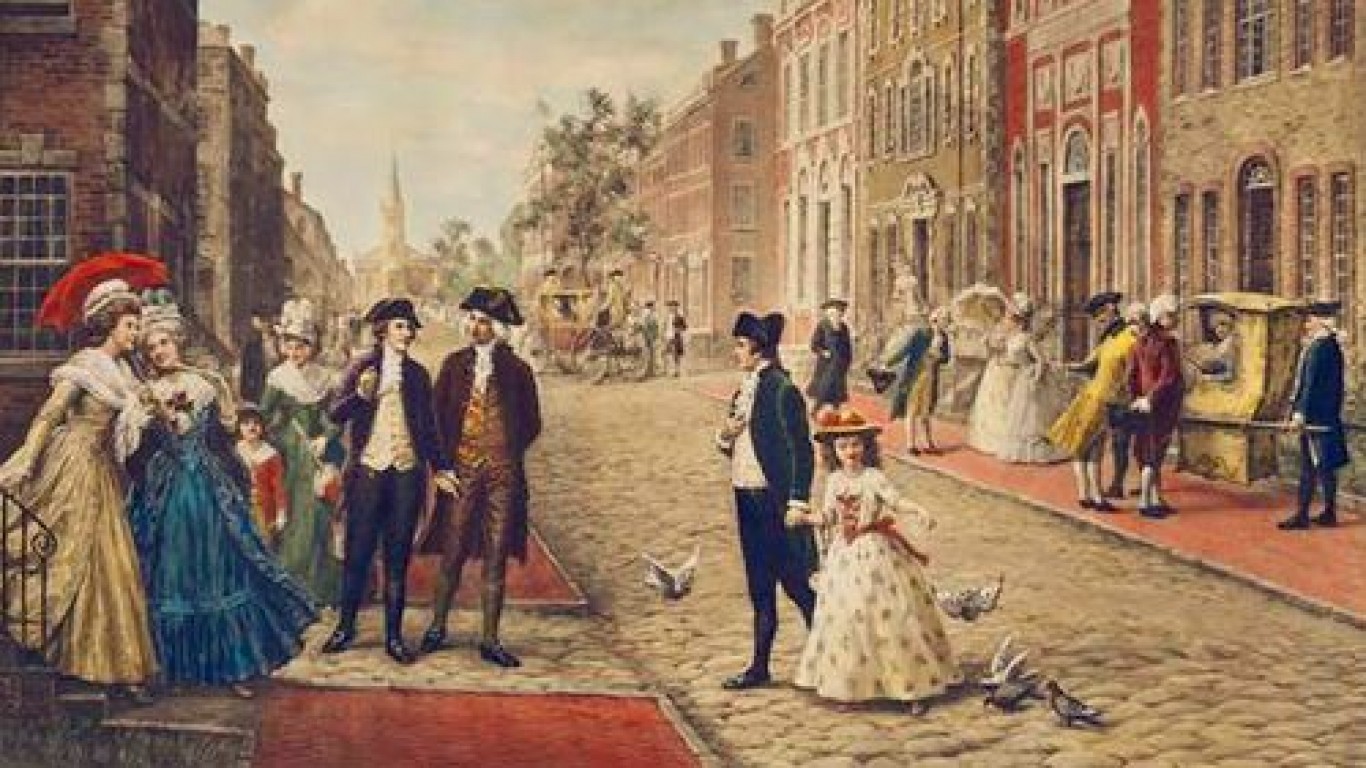
Alexander Hamiltion and Aaron Burr
> Year: 1804
> Location: Weehawken, New Jersey
Hamilton and Burr, who had long been political rivals, fought after Burr claimed that Hamilton had defamed him in a letter. Burr won the duel, fatally wounding his opponent. The event was a major scandal at the time. Hamilton was a respected figure, and his death was a major loss to the Federalist Party. Burr was already controversial, and the duel further damaged his reputation. He was eventually tried for murder, but was acquitted.
[in-text-ad]
Andrew Jackson and Charles Dickinson
> Year: 1806
> Location: Harrison’s Mill, Kentucky
In 1806, 23 years before he became president, Jackson killed attorney Charles Dickinson, himself a renowned duellist, in a confrontation that was apparently sparked by a disagreement over a horse race and/or some unpleasant comments Dickinson had drunkenly made about Jackson’s wife. Jackson was a notoriously bad shot, but he managed to kill Dickinson the first time he fired. Dickinson’s shot grazed Jackson’s ribs, causing him to bleed profusely, but he refused to be treated until Dickinson had been given a proper burial.
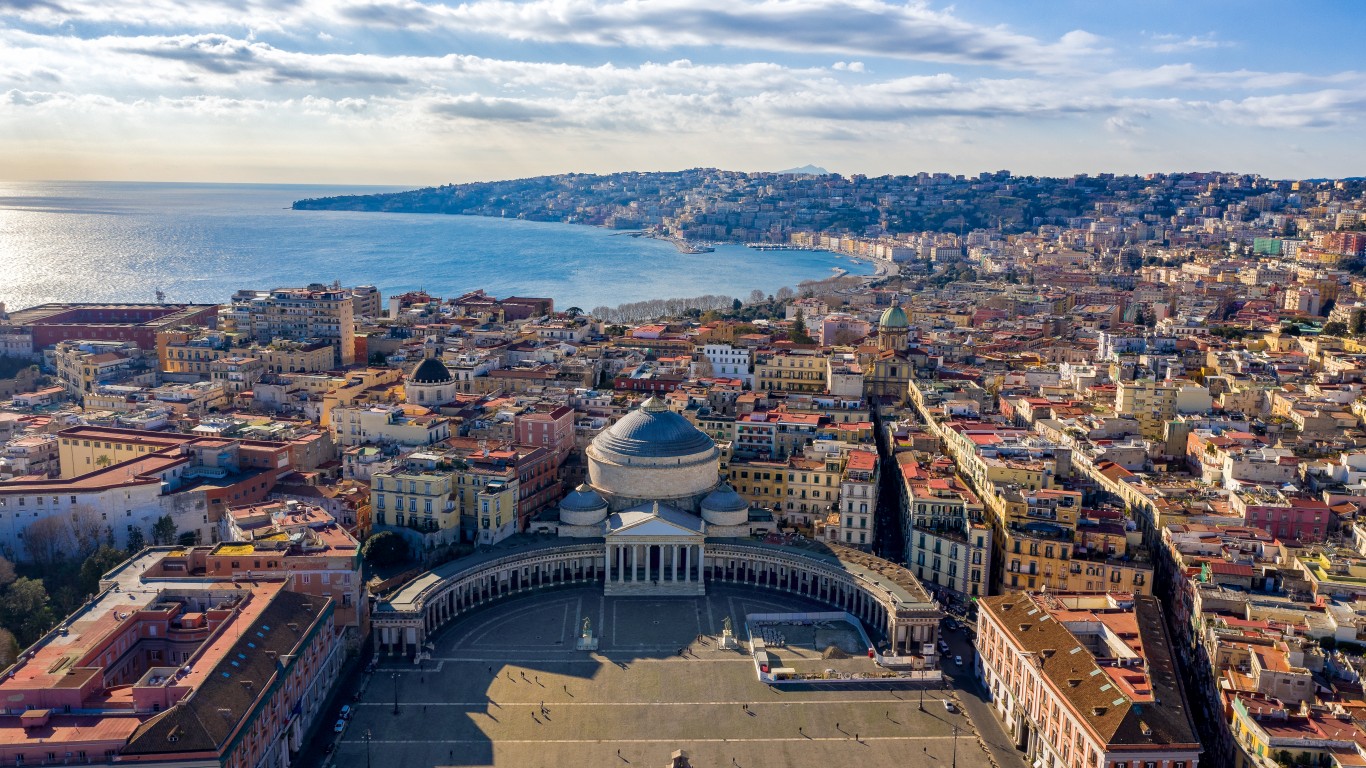
Isabella de Carazzi and Diambra de Pettinella
> Year: 1552
> Location: Naples, Italy
Two wealthy Neapolitan women, de Carazzi and de Pettinella, fought a duel over the affections of a nobleman named Fabio de Zeresola, to whom both were attracted. The duel was fought with swords and bucklers (small round shields), and after a long and bloody battle, de Carazzi killed her rival. A famous painting of the duel by the Spanish artist Jusepe de Ribera hangs in the Prado Museum in Madrid.

Miyamoto Musashi and Sasaki KojirÅ
> Year: 1612
> Location: Ganryū Island, Japan
On May 13, 1612, the famed swordsman and philosopher Musashi faced a worthy adversary in KojirÅ, equally famous for his skill with a sword. Musashi, who had been victorious in 60 previous duels, killed his opponent with a single blow. The duel was the result of a long-standing rivalry between the two men.
[in-text-ad-2]

George Frederic Handel and Johann Mattheson
> Year: 1704
> Location: Hamburg, Germany
Handel, the famed composer best-known for his “Messiah,” and Mattheson, a lesser-known but prolific creator of operas, concertos, and chamber music, were longtime friends and rivals. Though German-born, both men settled in London, where their mutual affections for the same woman led them to quarrel and take up swords against each other during a performance of one of Mattheson’s operas. Handel was supposedly saved from death when his opponent’s sword struck a button on his coat. The two men nonetheless remained friends until Handel’s death in 1759.

Philip Hamilton and George Eacker
> Year: 1801
> Location: Weehawken, New Jersey
In an eerie prelude to the better-known duel between Alexander Hamilton and Aaron Burr three years later, a few miles away, Hamilton’s 19-year-old son Philip faced off against Eacker, a New York attorney who had accused the elder Hamilton of potential treason and later called Philip a “damned rascal.” At first, both men refused to fire at each other, but Eacker finally shot, striking Hamilton above his hip. He died later at his aunt’s home in Manhattan. Philip’s 17-year-old sister, Angelica, went mad after his slaying, and continued talking with Philip as if he were alive for the rest of her life.
[in-text-ad]
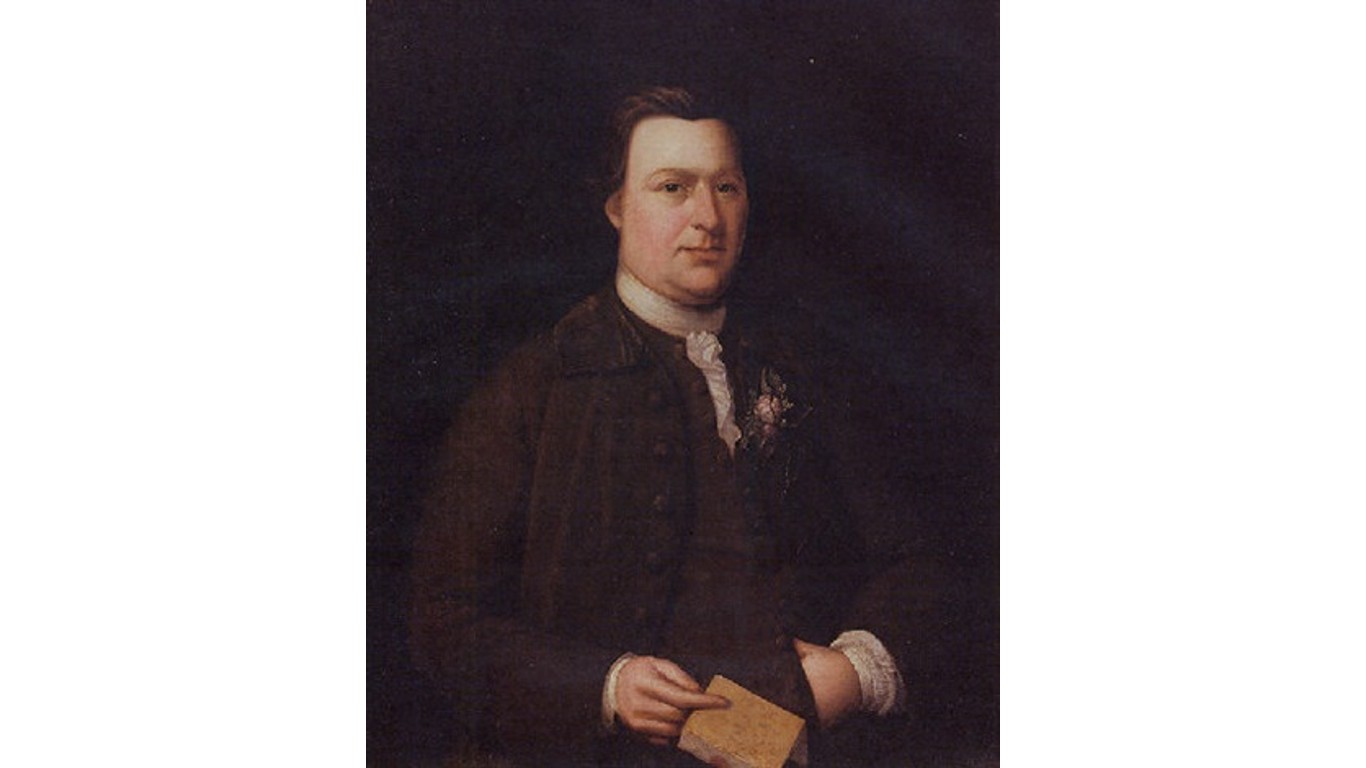
Button Gwinnett and Lachlan McIntosh
> Year: 1777
> Location: Savannah, Georgia
Gwinnett, a Georgia delegate to the Second Continental Congress and one of the signers of the Declaration of Independence, developed a bitter rivalry with McIntosh, who had succeeded him as commander of the Georgia battalion of the Continental Army. The two were at odds politically, and when Gwinnett became president of Georgia’s Committee of Safety, he had McIntosh’s brother arrested and charged with treason. Mcintosh denounced Gwinnett publicly as “a scoundrel and lying rascal,” prompting his rival to challenge him to a duel. The men shot each other on the field of honor, but McIntosh recovered while Gwinnett died three days later.
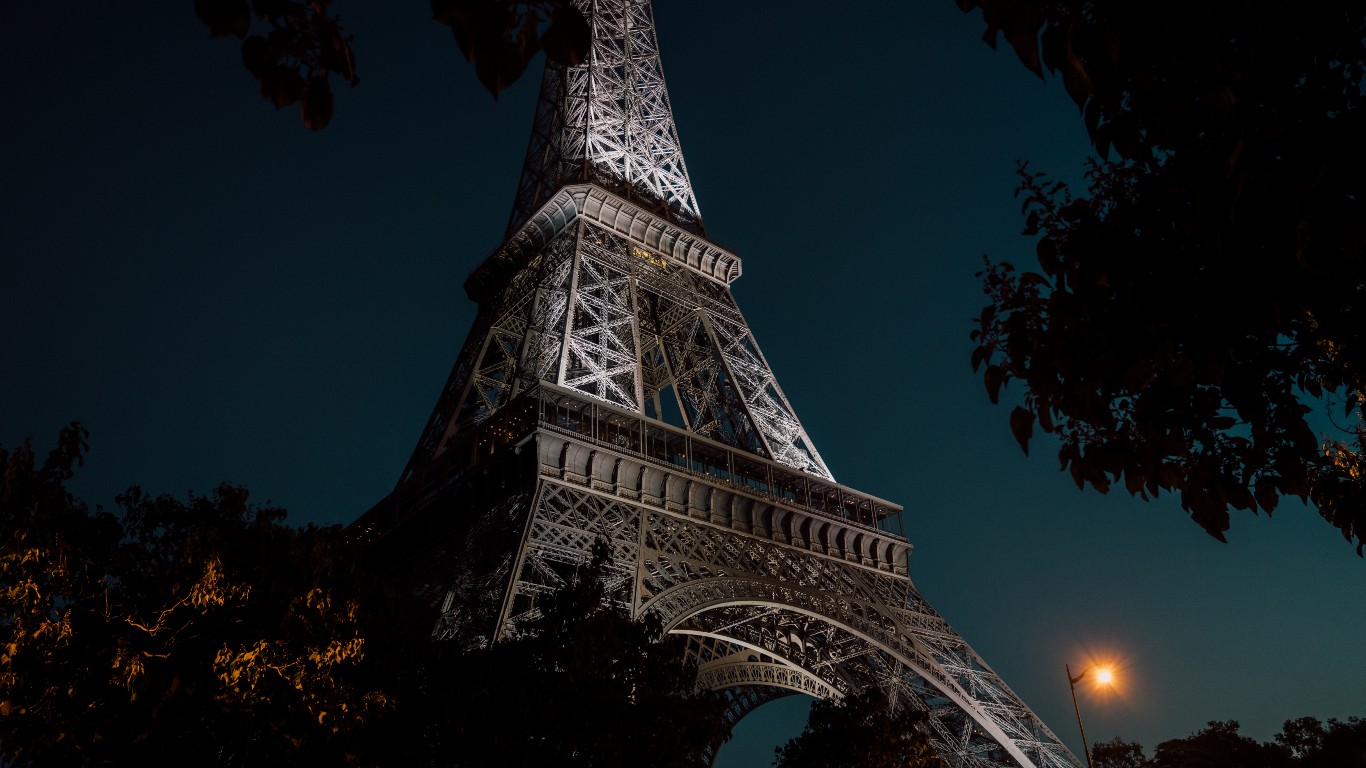
Monsieur de Grandpré and Monsieur Le Pique
> Year: 1808
> Location: Skies over Paris
There is some question as to whether this duel ever really took place (it may have been a hoax created by a newspaper), but if it really happened, it was unique in the annals of dueling. According to the story, two Frenchmen were vying for the affections of one Mlle. Tirevit (“shoot quickly”). They contrived to ascend over Paris in identical hot-air balloons, armed with blunderbusses. A signal was given from the ground, and both men fired. Le Pique missed, but Grandpré hit his rival’s balloon, which deflated and plummeted to earth, killing its unfortunate passenger.

Stephen Decatur and James Barron
> Year: 1820
> Location: Bladensburg Dueling Grounds, Maryland
On June 22, 1820, two U.S. Navy officers, Stephen Decatur and James Barron, faced each other with pistols on a spit of land where duels were frequently held along a tributary of the Anacostia River appropriately called Dueling Creek. Barron had been court-martialed and suspended from the Navy for allowing his flagship to be boarded and searched by the British, and Decatur — who was a celebrated Naval hero — had served on the board that found Barron guilty. Barron demanded satisfaction from Decatur, and shot him fatally.
[in-text-ad-2]
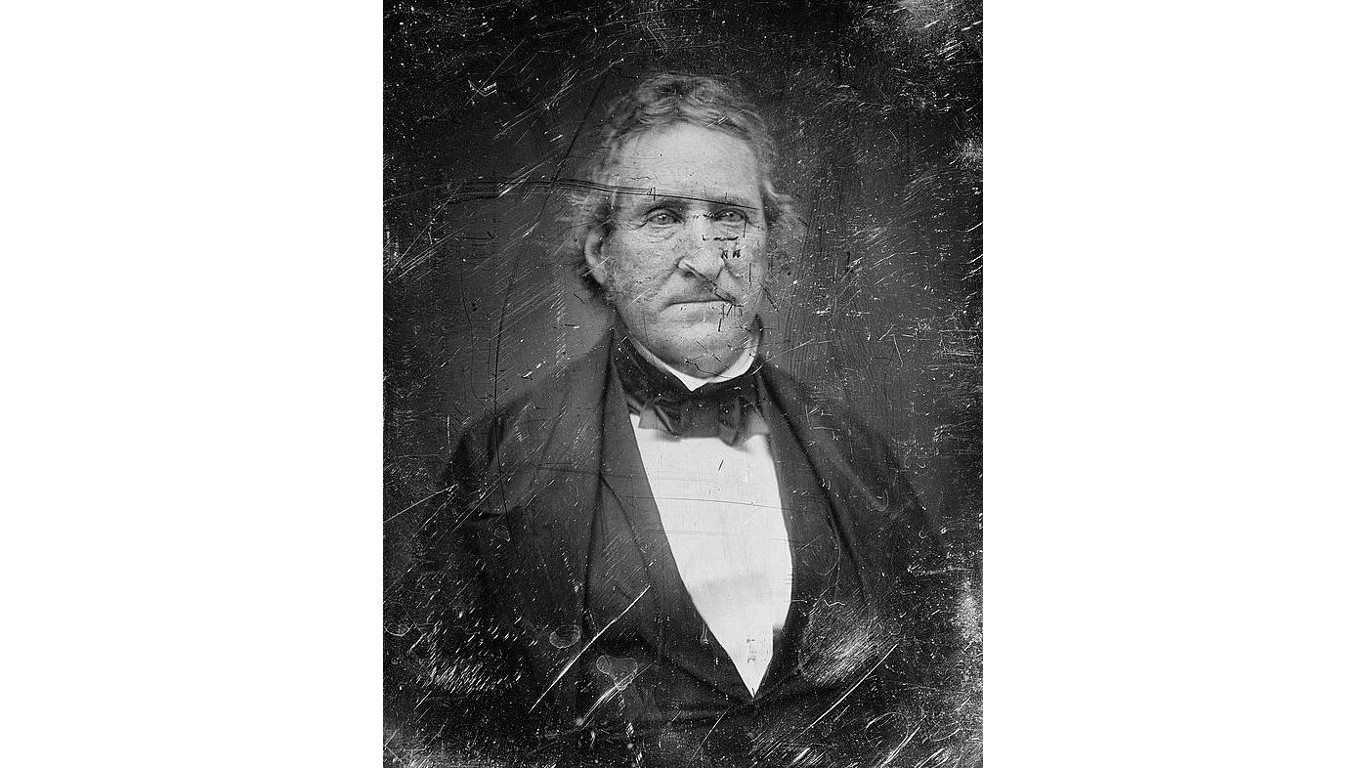
Thomas Hart Benton and Charles Lucas
> Year: 1817
> Location: Bloody Island, East St. Louis, Illinois
Benton, a prominent Missouri politician, and Charles Lucas, another well-known political figure in the state, clashed in a court case. Lucas won the case, and Benton was furious and, believing that Lucas had insulted him, challenged him to a duel. The two met on Bloody Island, a sandbar in the Mississippi River that was a popular spot for duels. The men fought with pistols at ten paces. Benton fired first and hit Lucas in the throat. Lucas fired back, but his shot missed. Benton then fired again and hit Lucas in the chest. The two wounds cost Lucas his life, but since dueling was legal in the territory at the time, Benton was never charged.
Alexander Pushkin and Georges-Charles d’Anthès
> Year: 1837
> Location: Saint Petersburg, Russia
Pushkin, the most famous Russian poet of the Romantic era, was killed in a duel with d’Anthès, a French officer, on January 27, 1837. The duel was the result of a long-standing quarrel between the two men over the Frenchman’s flirtation with Pushkin’s wife, Natalya — whom he pursued even though he had recently married Natalya’s sister. The terms of the duel called for the combatants to face one another at a distance, then walk towards each other, with either one taking the first shot at any time, then standing in place to await the other duelist’s shot. D’Anthès fired first, hitting Pushkin in the abdomen; Pushkin returned fire, grazing his opponent’s arm, but had himself been mortally wounded. He died two days later.
[in-text-ad]
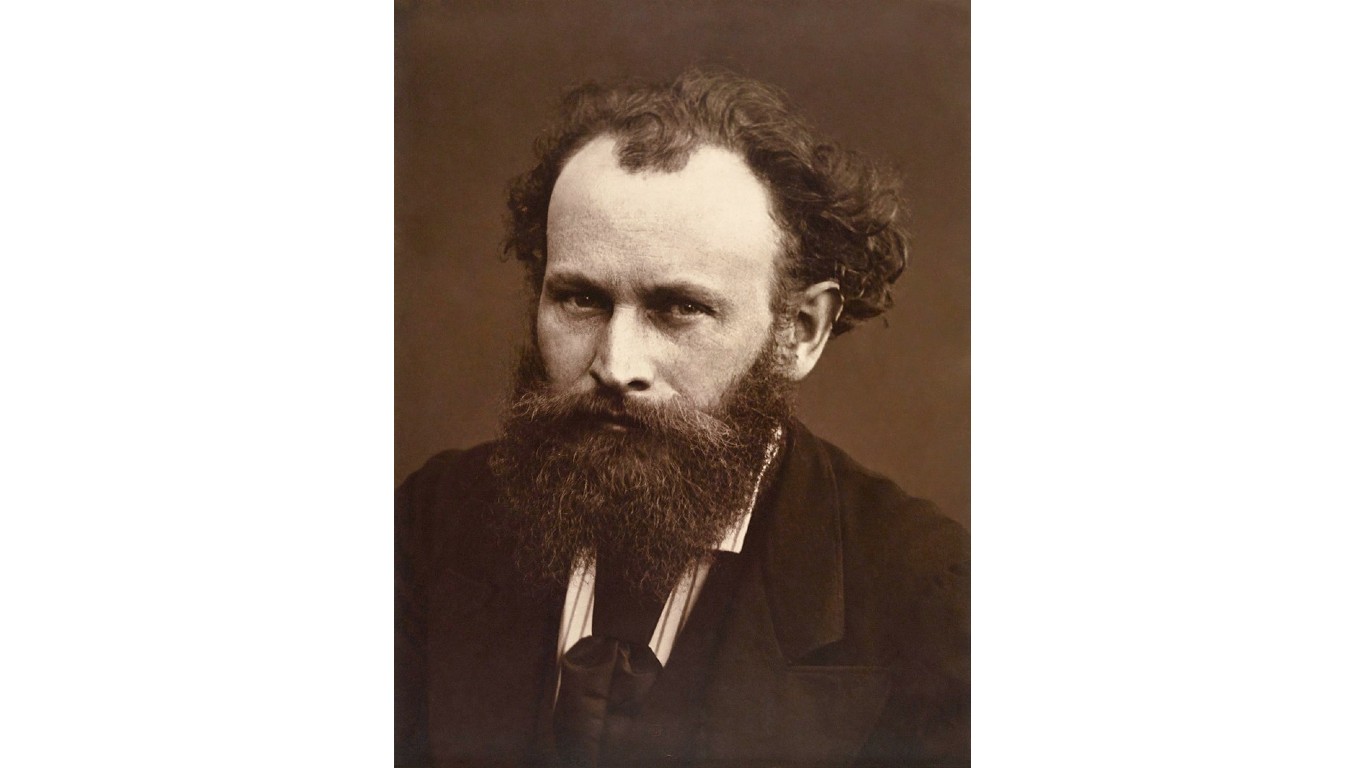
Édouard Manet and Louis Edmond Duranty
> Year: 1870
> Location: Forest of Saint-Germain, outside Paris
In February 1870, the famed painter Manet challenged his friend Duranty, an art critic, over a review Duranty had written about one of Manet’s works — reportedly accosting Duranty at the Café Guerbois in Paris and slapping him in the face. The two men met with sabres on a grassy field in the outskirts of Paris, with novelist Émile Zola as Manet’s second. When the duellists’ swords clashed for the first time, they both bent, with Duranty sustaining a minor wound. Manet considered his honor sufficiently defended, and the two resumed their friendship.

Marcel Proust and Jean Lorrain
> Year: 1897
> Location: Meudon Forest, outside of Paris
Two of the great French literary figures of the late 19th and early 20th century — Marcel Proust, author of the multi-volume masterwork “À la recherche du temps perdu” (“In Search of Lost Time”) and symbolist poet and novelist Jean Lorrain — fought a duel after Lorrain suggested that Proust was having a sexual relationship with his friend Lucien Daudet. (In fact he was; both Proust and Lorrain were gay.) The men faced each other with pistols, each firing but neither hitting his target, and the matter was considered settled.
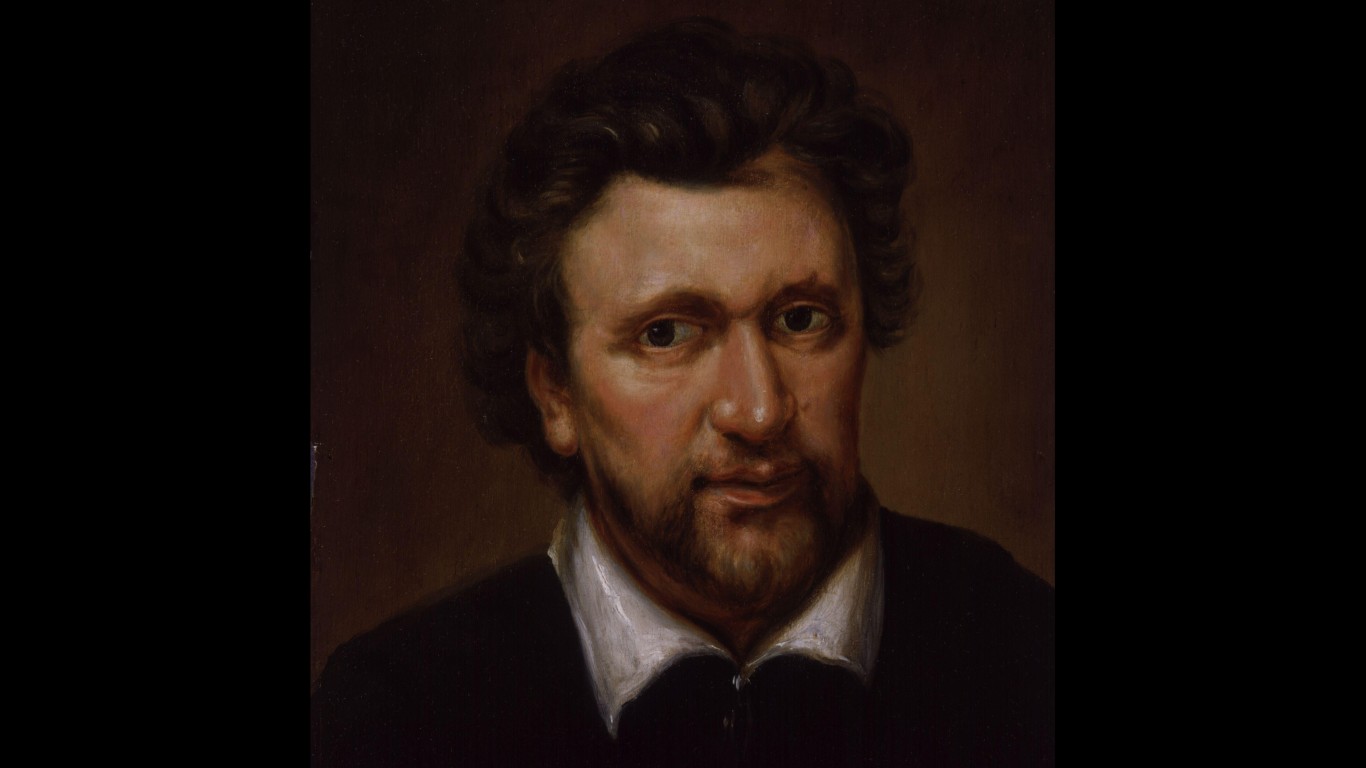
Ben Jonson and Gabriel Spenser
> Year: 1598
> Location: Hoxton Fields in Shoreditch, London
Two prominent Elizabethan playwrights, Jonson and Spenser, fought a duel on Sept. 7, 1598. Their cause of their disagreement is not known, but it may have been over a woman or over Jonson’s belief that Spenser had plagiarized one of his own dramas, but Spenser apparently initiated the fight. The two met with swords, with Spenser’s reported to have been longer. He drew first blood, but Jonson counterattacked and delivered a fatal blow to his challenger. Johnson was charged with murder, but he avoided execution by a legal maneuver called “benefit of clergy,” which required him to recite a biblical verse, give up his property, and be branded on the thumb.
[in-text-ad-2]

Lt. Col. John Laurens and General Charles Lee
> Year: 1778
> Location: Philadelphia
On Dec. 23, 1778, two prominent Revolutionary War figures — Lt. Col. John Laurens, who had served as George Washington’s aide-de-camp, and General Charles Lee — fought a duel after Laurens learned that Lee had made derogatory comments about Washington related to Lee’s court-martial for conduct during the Battle of Monmouth. (Laurens’s second, ironically, was Alexander Hamilton, who was himself to be killed in a duel a quarter century later.) Laurens’ first shot wounded Lee non-fatally and the men’s seconds declared the duel a draw.
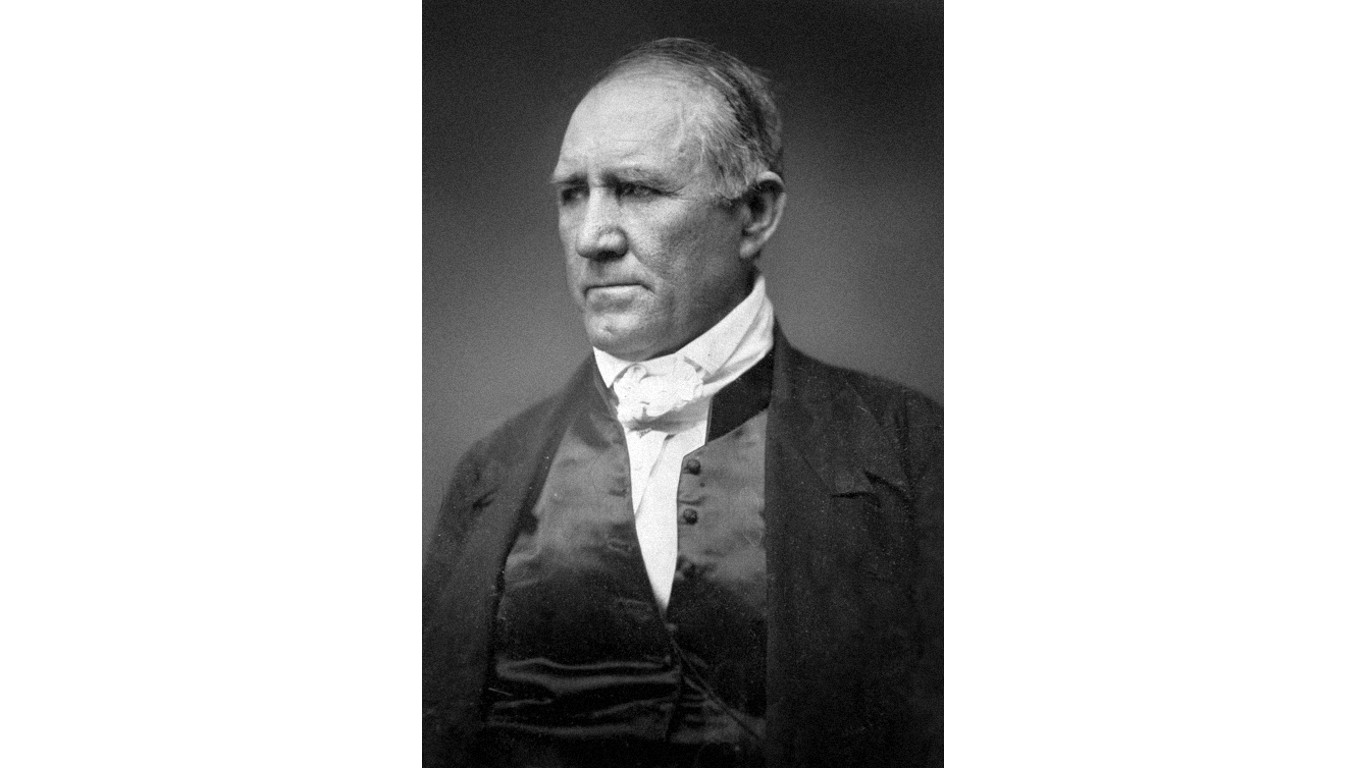
Sam Houston and William White
> Year: 1826
> Location: Linkumpinch, near Franklin, Kentucky
As the result of a complicated dispute over the role of Nashville postmaster, attorney and former army officer White, who had served as adjutant general under future U.S. president Andrew Jackson at the Battle of New Orleans, challenged Houston, a U.S. Representative from Tennessee, to a duel. The pair squared off at 15 paces on the morning of September 22. When both men fired, White missed but Houston’s bullet struck White in the groin. White survived, but a Kentucky grand jury charged Houston with a felony. The state of Tennessee, where Houston had begun an ultimately successful campaign for governor, refused to extradite him across the state line. His reputation in Tennessee was damaged, however, and in 1832, he moved to Texas, where he became president of pre-statehood Texas on two separate occasions, then a U.S. Senator from and finally governor of the state — whose largest city now bears his name.
[in-text-ad]
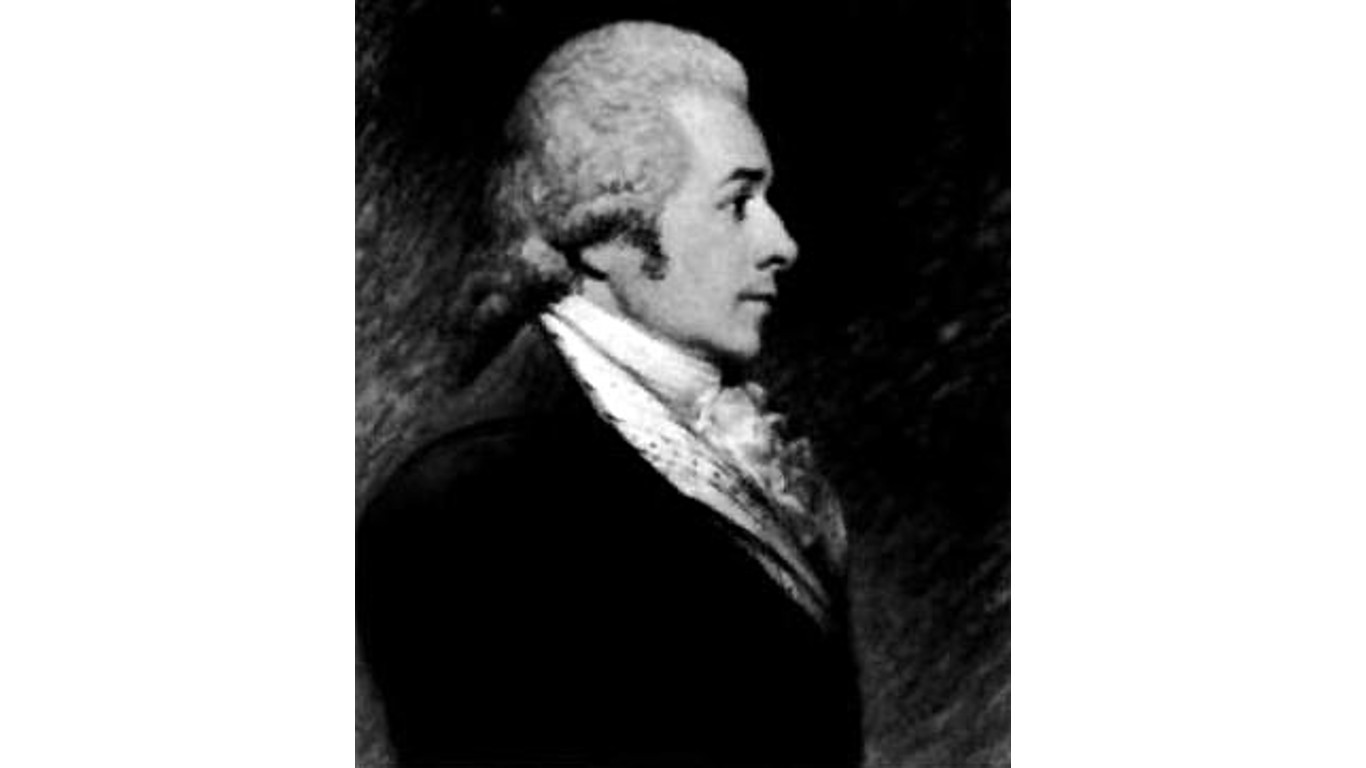
Daniel Key and John Sherburne
> Year: 1835
> Location: Bladensburg Dueling Grounds, Maryland
Key, whose father was Francis Scott Key (author of “The Star-Spangled Banner”), and Sherburne, a fellow midshipman of his in the U.S. Navy, were reportedly at odds over a broken engagement between Key and Sherburne’s sister. The two met with pistols at a famous dueling site on a spit in a tributary of the Anacostia River. Key fired first and missed. Sherburne’s shot hit Key in the chest, killing him instantly. Sherburne was court-martialed and drummed out of the Navy, but went on to become a prominent attorney and political figure.

The Duke of Wellington and Sir George Finch-Hatton
> Year: 1829
> Location: South bank of the River Thames opposite Chelsea, London
A dispute over the Catholic Relief Bill of 1829 (freeing English Catholics from many of the strictures placed on them by Henry VIII and his successors), which Finch-Hatton — a notoriously combative politician — ardently opposed, led the Duke of Wellington to challenge him to a duel. The Duke fired his pistol, but missed (deliberately, he later claimed), while Finch-Hatton simply fired his into the air. The two subsequently reconciled.
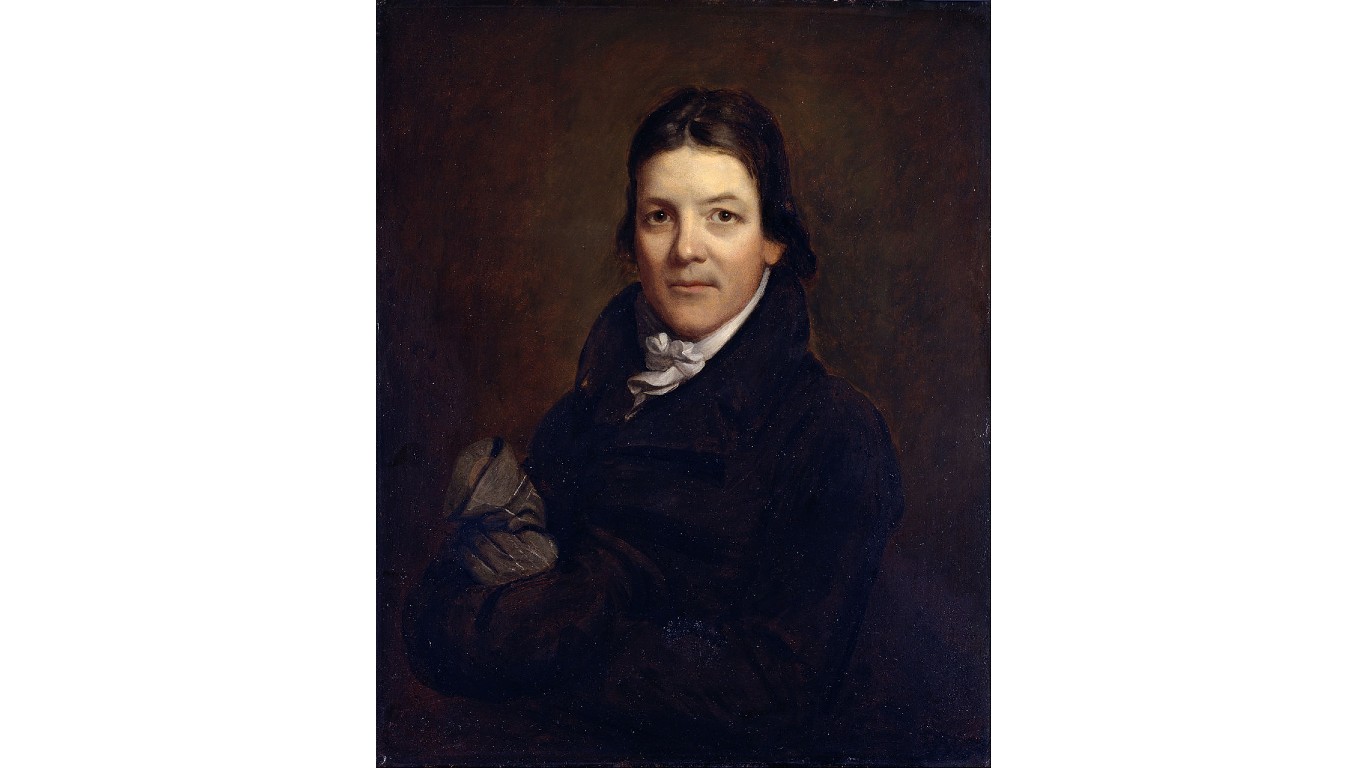
John Randolph and Henry Clay
> Year: 1826
> Location: Near Pimmit Run, Virginia
After Randolph, a U.S. Senator from Virginia, described Clay, a famed orator and failed presidential candidate then serving as secretary of state, as a “blackleg” (a cheater or swindler), Clay challenged him to a duel. Randolph missed with his first shot and Clay’s bullet merely snagged Randolph’s coat. Instead of shooting at Clay a second time, Randolph fired into the air. Clay didn’t fire a second time at all, but walked up to his opponent and asked if he were injured – to which Randolph replied “You owe me a coat, Mr. Clay.” Good relations between the two were restored.
[in-text-ad-2]
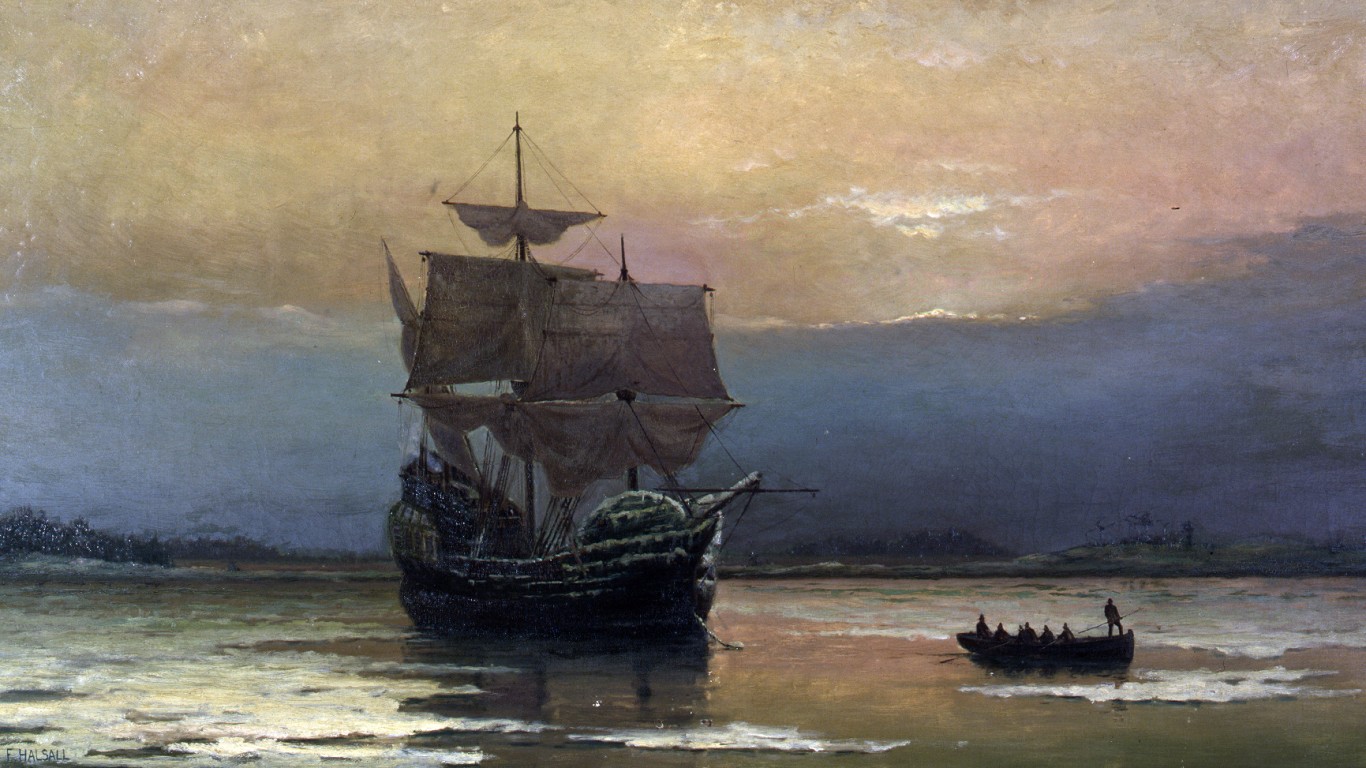
Edward Doty and Edward Leister
> Year: 1621
> Location: Plymouth, Massachusetts
In the early days of the Plymouth Colony, Doty and Leister, who had sailed to the New World on the Mayflower, possibly as servants of a merchant named Stephen Hopkins, fought a duel whose impetus is not now remembered. Dueling with swords, they wounded each other slightly before giving up the fight. Colony authorities punished them by tying them together without food or drink, for a period of what was supposed to be 24 hours — but Hopkins took pity on them and had them released with the promise of good behavior.
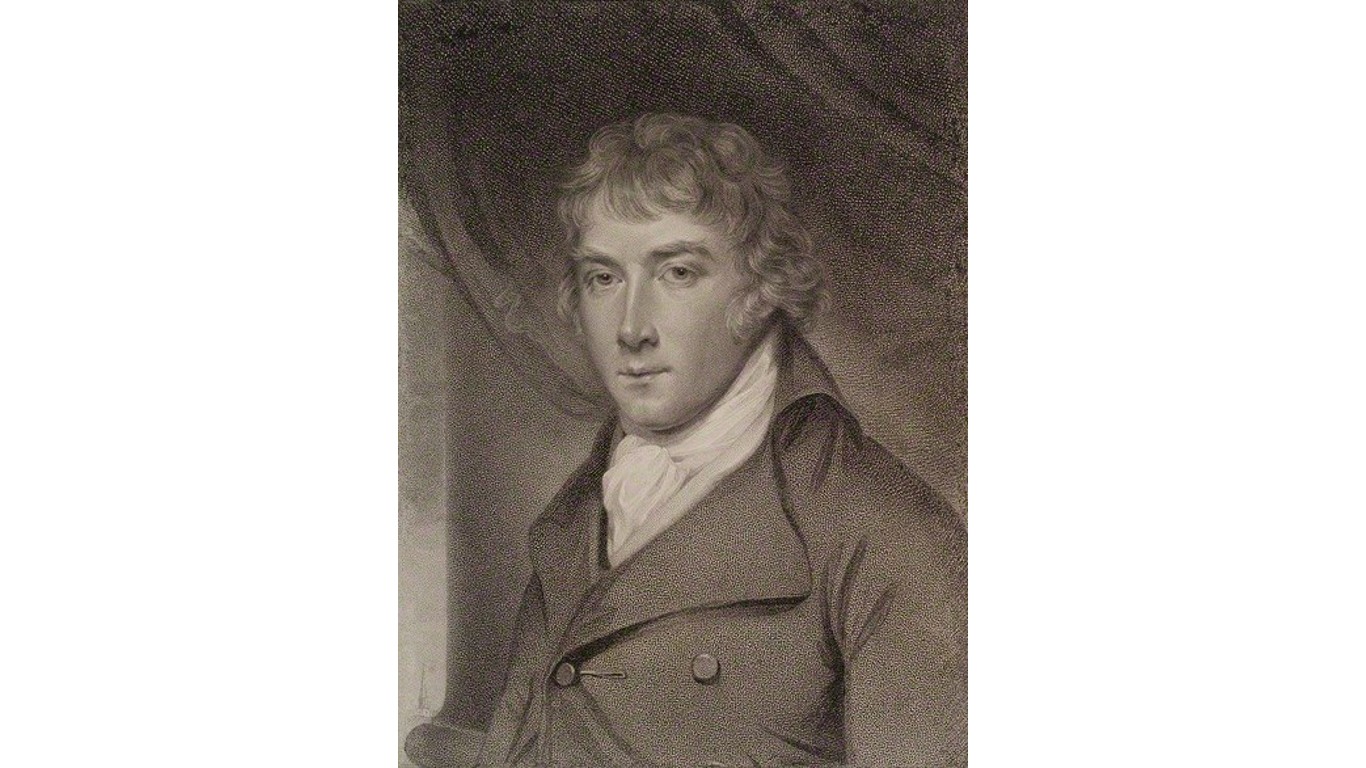
William PItt the Younger and George Tierney
> Year: 1798
> Location: Putney Heath, London
Tierney, an Irish Whig politician, was a longtime opponent of the policies of Pitt, Britain’s Tory prime minister, and when Pitt accused Tierney publicly of being unpatriotic, the Irishman responded with a challenge to a duel. Though both were experienced duelists, neither man was injured. The political rivalry between the two continued, however, until Pitt’s death in 1806.
[in-text-ad]

Congressman Barent Gardenier and George Washington Campbell
> Year: 1808
> Location: Bladensburg Dueling Grounds, Maryland
Gardenier, a member of the House of Representatives from New York, and Campbell, his counterpart from Tennessee, had the dubious honor of fighting the first duel ever on the spit of land that became known as the Bladensburg Dueling Grounds. Gardenier had delivered a speech condemning Thomas Jefferson’s trade embargo against England, and accusing the president’s party of being under French influence. Campbell took this as a personal insult and issued a challenge. Campbell emerged unscathed and, according to a contemporaneous newspaper account, “Mr. Gardenier was wounded but we are happy to say that the surgeons have ascertained it to be only a flesh wound. ” The paper added that “The gentlemen, we understand, both behaved with great bravery and coolness on the ground.”
Are You Still Paying With a Debit Card?
The average American spends $17,274 on debit cards a year, and it’s a HUGE mistake. First, debit cards don’t have the same fraud protections as credit cards. Once your money is gone, it’s gone. But more importantly you can actually get something back from this spending every time you swipe.
Issuers are handing out wild bonuses right now. With some you can earn up to 5% back on every purchase. That’s like getting a 5% discount on everything you buy!
Our top pick is kind of hard to imagine. Not only does it pay up to 5% back, it also includes a $200 cash back reward in the first six months, a 0% intro APR, and…. $0 annual fee. It’s quite literally free money for any one that uses a card regularly. Click here to learn more!
Flywheel Publishing has partnered with CardRatings to provide coverage of credit card products. Flywheel Publishing and CardRatings may receive a commission from card issuers.
Thank you for reading! Have some feedback for us?
Contact the 24/7 Wall St. editorial team.


